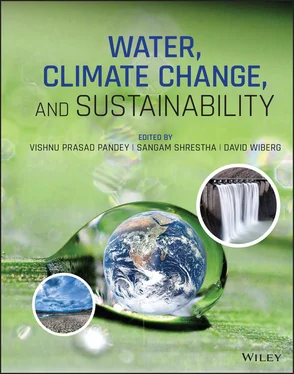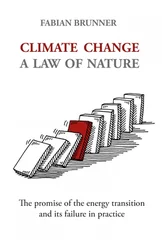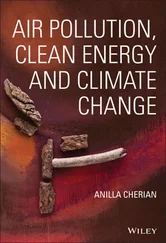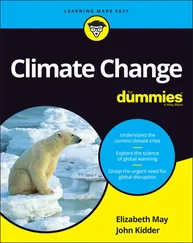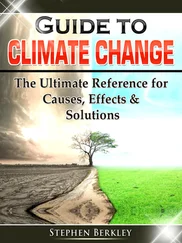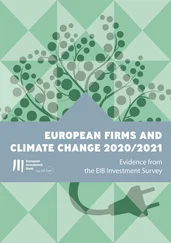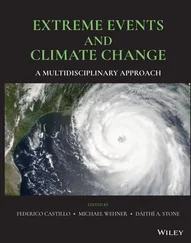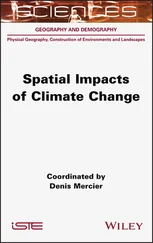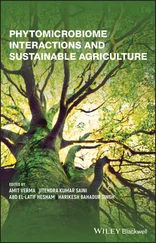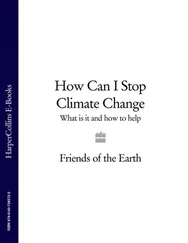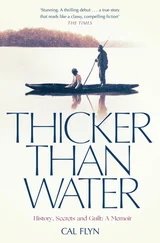1 Cover
2 Title Page
3 Copyright Page
4 Contributors
5 Preface
6 Section I: Sustainability Concepts 1 Localizing and Mainstreaming Global Initiatives on Water, Climate Change and Sustainable Development 1.1 SUSTAINABILITY CHALLENGES AND GLOBAL INITIATIVES 1.2 EVOLUTION OF WATER AND CLIMATE CHANGE AS GLOBAL AGENDAS 1.3 FORMULATION AND GOVERNANCE OF SDGS 1.4 INTERDEPENDENCY OF SDGS WITH WATER 1.5. CONSIDERATIONS FOR ACHIEVING THE SDGS REFERENCES 2 A River Basin Approach for the Coordinated Implementation of Water Related Targets in Sustainable Development Goals (SDGs) 2.1. INTRODUCTION 2.2. IMPLEMENTATION FRAMEWORKS FOR SDGS 2.3. INTEGRATED APPROACH FOR WATER RELATED TARGETS OF SDGS 2.4. INTEGRATED RIVER BASIN MANAGEMENT FOR SDG6 IMPLEMENTATION 2.5. READINESS FOR IMPLEMENTING WATER‐RELATED SDGS: THE CASE OF THE LOWER MEKONG BASIN (LMB) 2.6. SUMMARY AND WAYS FORWARD ACKNOWLEDGEMENTS REFERENCES 3 Water‐Energy Nexus in Bio‐Based Systems 3.1. INTRODUCTION 3.2. WATER SUPPLY AND USE IN BIO‐BASED SYSTEMS 3.3. ENERGY IN BIO‐BASED SYSTEMS 3.4. THE FRAMEWORK FOR WATER‐ENERGY NEXUS IN BIO‐BASED SYSTEMS 3.5. ASSESSING SUSTAINABILITY OF WATER AND ENERGY IN BIO‐BASED SYSTEMS 3.6. CHALLENGES AND OPPORTUNITIES 3.7. SUMMARY REFERENCES 4 Safe‐Sanitation Adaptive‐Integrated Management Systems (SAIMS)A Conceptual Process Tool for Incorporating Resilience 4.1. INTRODUCTION 4.2. SAIMS FOUNDATIONS 4.3. THE SAIMS CONCEPTUAL TOOL 4.4. KEY STEPS TOWARDS SAIMS 4.5. POTENTIAL CONTRIBUTIONS OF SAIMS TO THE SDGS 4.6. DESIGNING SAIMS BASED INFRASTRUCTURE 4.7 GOVERNANCE OF SAIMS 4.8. CHALLENGES AND OPPORTUNITIES 4.9. CONCLUSION REFERENCES
7 Section II: Sustainability Approaches, Tools, and Techniques 5 Approaches and Tools to Assess Water‐Climate‐Sustainability Nexus: A Systematic Review 5.1. INTRODUCTION 5.2. METHODOLOGY 5.3. CHARACTERIZATION OF WCS‐NEXUS METHODS/APPROACHES 5.4. DISTINCT FEATURES OF WCS‐NEXUS APPROACHES AND TOOLS 5.5. GEOGRAPHIC SCOPE AND SCALE OF ANALYSIS 5.6. SUMMARY ACKNOWLEDGEMENTS REFERENCES APPENDIX 6 Rejuvenation of Springs in the Himalayan Region 6.1. INTRODUCTION 6.2. THE DRYING UP OF SPRINGS 6.3. SPRINGSHED MANAGEMENT: A MULTIDISCIPLINARY APPROACH TO REVIVING HIMALAYAN SPRINGS ACKNOWLEDGEMENTS REFERENCES 7 Enhancing Water Productivity Through On‐Farm Water Management 7.1. BACKGROUND 7.2. PATHWAYS TO INCREASE WP 7.3. CHALLENGES FOR INCREASING WATER PRODUCTIVITY 7.4. CONCLUSION AND WAY FORWARD REFERENCES 8 Climate Actions and Challenges for Sustainable Ecosystem Services 8.1. INTRODUCTION 8.2. CLIMATE IMPACTS AND ACTIONS IN CALIFORNIA 8.3. CASES OF CLIMATE ACTIONS IN CALIFORNIA WATER SECTOR 8.4. CHALLENGES AND OPPORTUNITIES IN CLIMATE ACTIONS AND APPROACHES 8.5. SUMMARY ACKNOWLEDGEMENTS REFERENCES 9 Monitoring and Accountability Frameworks for SDG 6 9.1. CONTEXT: ACCOUNTABILITY, HUMAN RIGHTS, AND THE SUSTAINABLE DEVELOPMENT GOALS FRAMEWORK 9.2. STUDY METHODOLOGY AND FRAMEWORK OF ANALYSIS 9.3. FINDINGS 9.4. DISCUSSION 9.5. CONCLUSIONS ACKNOWLEDGMENTS REFERENCES 10 Research to Policy and Practice 10.1. INTRODUCTION 10.2. RE‐ORIENTING FORMAL EDUCATION AND RESEARCH 10.3. RESEARCH INPUT FOR POLICY AND PRACTICE 10.4. CHALLENGES AND OPPORTUNITIES 10.5. SUMMARY AND MOVING FORWARD REFERENCES
8 Section III: Sustainability in Practice 11 Resilient Water Infrastructure for Poverty Reduction: Cases from Asia and Middle East 11.1. INTRODUCTION 11.2. LINKAGES BETWEEN WATER INFRASTRUCTURE AND DEVELOPMENT 11.3. EVIDENCES OF THE POSITIVE IMPACT OF WATER INFRASTRUCTURAL SOLUTIONS IN THE CONTEXT OF SUSTAINABLE DEVELOPMENT 11.4. THE WAY FORWARD: CHALLENGES AND GOOD PRACTICES REFERENCES 12 High Efficiency Irrigation Technology As a Single Solution for Multi‐Challenge 12.1. INTRODUCTION 12.2. HEIT IN PAKISTAN 12.3. HEIT IMPACTS AND CHALLENGES 12.4. WAYS FORWARD REFERENCES 13 Irrigation Scheduling and Management for Improved Water Productivity 13.1. INTRODUCTION 13.2. APPROACHES FOR IMPROVING IRRIGATION SCHEDULING 13.3. CASE STUDY – IRRIGATION SCHEDULING IN CANTERBURY REGION, NEW ZEALAND 13.4. CHALLENGES AND OPPORTUNITIES 13.5. WAYS FORWARD ACKNOWLEDGMENTS REFERENCES 14 Urban Water Security for Sustainable Cities in the Context of Climate Change 14.1. INTRODUCTION 14.2. CHARACTERIZING URBAN WATER (IN)SECURITY – THEORETICAL ASPECTS 14.3. ADDRESSING URBAN WATER INSECURITIES: A CASE OF DHAKA, BANGLADESH 14.4. CHALLENGES AND OPPORTUNITIES 14.5. SUMMARY REFERENCES 15 Approach Towards Building Climate‐Resilient Irrigation Systems for Food Security in Nepal 15.1. INTRODUCTION 15.2. STATUS OF FOOD SECURITY IN NEPAL 15.3. KEY DETERMINANTS OF FOOD SECURITY 15.4. MAKING THE IRRIGATION SYSTEMS CLIMATE‐ RESILIENT: LEARNING FROM THE SELECTED CASES 15.5. SUMMARY AND WAYS FORWARD REFERENCES 16 A Stakeholder‐Centric Tool for Implementing Water Management Strategies and Enhancing Water Cooperation (SDG 6.5) in the Lower Mekong Region 16.1. INTRODUCTION 16.2. SWARM OVERVIEW 16.3. CO‐PRODUCTION AND STAKEHOLDER‐ENGAGEMENT FRAMEWORK FOR CROSS‐CASE ANALYSIS 16.4. RESULTS 16.5. SREPOK BASIN 16.6. SWARM BENEFITS, ENABLING CONDITIONS, AND UPSCALING POTENTIAL ACKNOWLEDGEMENTS REFERENCES
9 Index
10 End User License Agreement
1 Chapter 1 Table 1.1 Selected global initiatives in the areas of environment, water and ... Table 1.2 Sustainability challenges across multiple sectors or issues interli... Table 1.3 Selected international negotiations on climate change in light of i... Table 1.4 Targets and indicators of SDG6. Source: Modified from UN (2020). Table 1.5 Interlinkages between SDG6 and rest of 16 SDGs
2 Chapter 2 Table 2.1 Country specific issues related to water resource management in the... Table 2.2 The most recent state of SDG6 in the Lower Mekong Basin (LMB) count...
3 Chapter 3 Table 3.1 Evapotranspiration and water footprint of some crops for energy pur... Table 3.2 Water footprint of biofuels from different feedstocks. Table 3.3 Total energy use and energy use efficiency of oilseeds production. Table 3.4 Selected indicators for water and energy use. *
4 Chapter 4 Table 4.1 Properties of resilienceTable 4.2 Description of SAIMS dimension component.Table 4.3 Potential climate impacts on sanitation infrastructure and services...Table 4.4 Sanitation technology resilience
5 Chapter 5Table 5.1 Methods used for decision analysis in WCS‐nexus assessment.Table 5.2 Tools used only once in WCS‐nexus assessments over the study period...Table 5.3 New/novel innovative approaches to assess the WCS‐nexus.Table 5.4 Type of collaboration amongst disciplines and sectors in reviewed a...Table 5.5 Tools and approaches identified for achieving sustainable water man...
6 Chapter 6Table 6.1 A summary of features that lead to the most common typology of spri...Table 6.2 Indicative list of initiatives by various institutions on springshe...
7 Chapter 7Table 7.1 Pathways to increase water productivity (adapted from Giordano et a...Table 7.2 Factors influencing uptake and adoption of WP enhancing practices
8 Chapter 8Table 8.1 Climate Change Effects and Related Actions in Water, Energy, Food a...Table 8.2 Examples in Related California Climate Actions.Table 8.3 Examples of climate changes action plans and GHG targets and achiev...
9 Chapter 9Table 9.1 Results of the online survey to the question: “Does your government...
10 Chapter 10Table 10.1 Benefits of partnership of university/institution of higher educat...
11 Chapter 11Table 11.1 Types of water infrastructure and their implications for sustainab...Table 11.2 Disaster‐related casualties and costs, median annual values by HDI...
12 Chapter 12Table 12.1 Impact of HEIT.
13 Chapter 13Table 13.1 Different methods of irrigation scheduling.Table 13.2 Irrigation starting and stopping strategies based on plant availab...Table 13.3 Irrigation starting and stopping strategies based on plant availab...Table 13.4 Drainage estimate from irrigated area with centre pivot under exis...
Читать дальше
